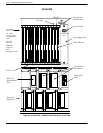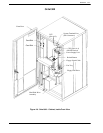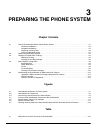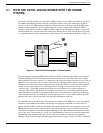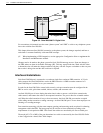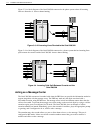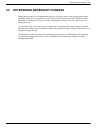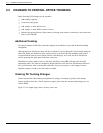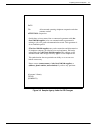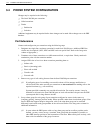
3-2 Installation and Maintenance Volume
Octel 200/300 S.4.1 PB60019−01
Trunks
E-1 Digital Link
Extensions
PBX
Octel
200/300
Figure 3-2 Octel 200/300 E-1 Digital Link
For convenience, this manual uses the terms “phone system” and “PBX” to refer to any telephone system
that works with the Octel 200/300.
This chapter discusses Octel 200/300 connection to the phone system, the changes required, and how to
order them. It assumes familiarity with some PBX concepts.
. When implementing a PBX integration, use the appropriate Configuration Note to supplement the
Installation and Maintenance manual.
Changes need to be made to the phone system for Octel 200/300 message servers. Some are changes to
the PBX; others are done in the Public Exchange (PE). This may require lead time. Work with the client
to determine who will make the changes and how long they will take. Prepare a schedule so that everyone
knows who is doing what and the date each item is required.
Interfaced Installations
Each Octel 200/300 port is connected to a touchtone single-line, touchtone PBX extension. A 25-pair
cable connects the Octel 200/300 line card to the PBX extension. A PBX extension connected to a
Octel 200/300 port is referred to as a port extension.
In order for the Octel 200/300 to extend calls correctly, each port extension must be configured in the
PBX to receive calls, place them on hold, initiate, transfer, and reconnect calls.
An Octel 200/300 port is in use during the entire time it takes to answer a call, dial the extension the
caller entered, and connect the caller to the requested extension. The port is then free to handle another
call. When the called extension is busy or does not answer, the Octel 200/300 port remains occupied
while calling another extension or taking a message. An Octel 200/300 port is in use when employees are
listening to or sending messages.
Port extensions answering with the same company greeting and answering mode are placed in a hunting
arrangement within the PBX. The hunt group may be circular or linear (terminal) according to the
requirements of each particular PBX. This assures that callers are answered by the first available port.
The mode (AX, CX, or MX) of the port determines how calls are answered by the Octel 200/300. Refer
to the Configuration volume, Slots Table chapter.



